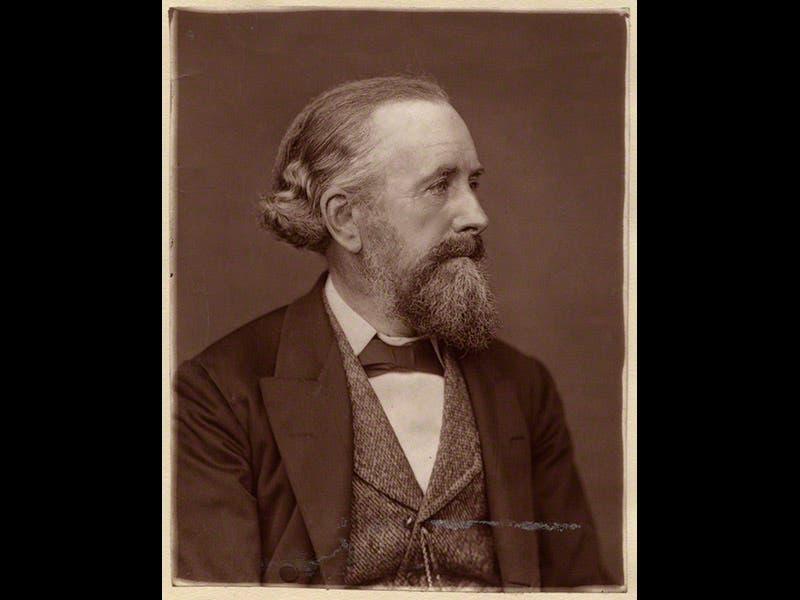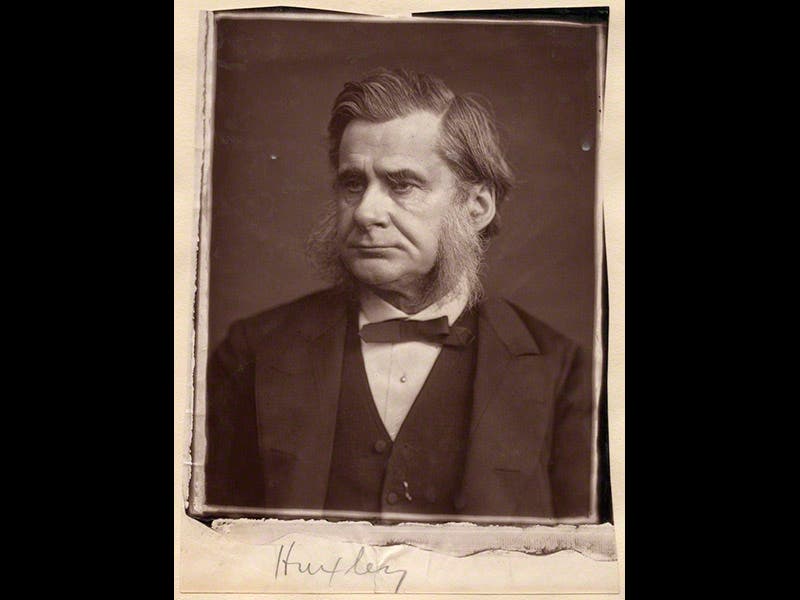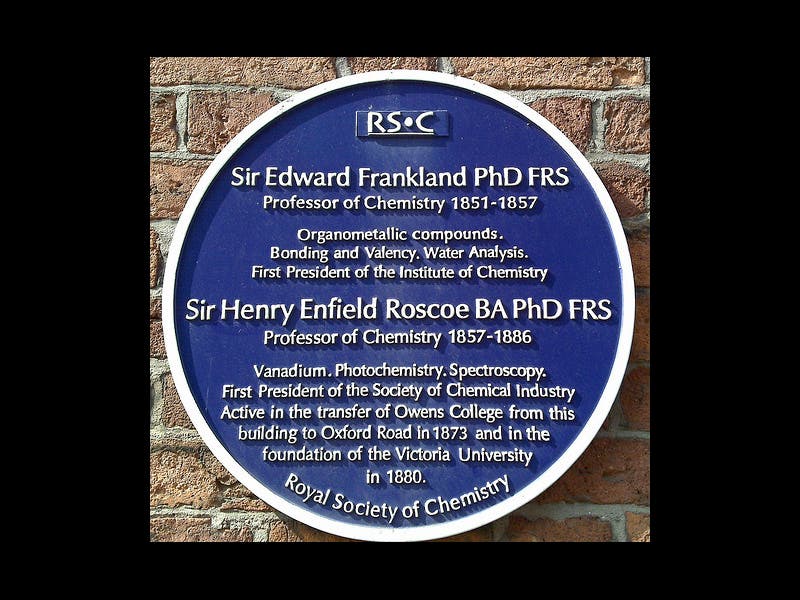Scientist of the Day - Edward Frankland
Sir Edward Frankland, an English chemist, was born Jan. 18, 1825. In 1852, Frankland read a paper to the Royal Society of London, in which he proposed the concept of valence (or valency, as the British call it). Frankland pointed out that every element tends to combine with a certain number of atoms of other elements, and this number, called the valence, is a constant for a given element. Thus oxygen tends to combine with two hydrogen atoms, so its valence is two, while carbon combines with four hydrogen atoms, or two oxygen atoms, giving it a valence of four. The concept of valence brought a great deal of order to chemistry, which still hadn't quite figured out whether oxygen has an atomic weight of 8 or 16, or whether carbon has a weight of 6 or 12. Frankland's paper was published in the Philosophical Transactions later that year.
On Nov. 3, 1864, Frankland and 6 other eminent Victorian scientists were invited to dinner at the home of Thomas Henry Huxley. The group met again the next month, adding one more invitee, and, with no further additions, they continued to dine together once a month for the next 29 years. They called themselves the X-Club, and they became one of the more important behind-the-scenes forces in Victorian science. Other members were: Herbert Spencer, the social evolutionist; John Lubbock, the archaeologist; and George Busk, the anthropologist. Most of the members were friends of Charles Darwin and partial to his discovery of evolution by natural selection; their agenda (which they never put in writing) seems to have been, first and foremost, to maintain contact with one another as life threatened to wedge them apart, and second, to advance their belief that science ought to proceed without the influence of religious dogma. Many of the members were religious, but they believed that organized religion had no business determining the direction or content of contemporary science. Although the X-Club was far from being a Political Action Committee, they did have a great deal of say as to who were elected officers of the Royal Society of London and the British Association for the Advancement of Science, and quite a few of their number served as President of those two organizations in the 1870s and 1880s. Darwin, interestingly, was never a member of the X-Club. Perhaps he did not want to belong to a club where he himself was frequently the subject of conversation.
There is a lovely Woodburytype of Frankland in the National Portrait Gallery in London (NPG), made about 1880 (first image). The NPG also has a Woodburytype of the founder of the X-Club, T.H. Huxley, made about the same time (second image). And Frankland shares a blue plaque with another prominent Victorian chemist, Sir Henry Roscoe, on a wall at the University of Manchester, where Frankland taught for 6 years (third image).
Dr. William B. Ashworth, Jr., Consultant for the History of Science, Linda Hall Library and Associate Professor, Department of History, University of Missouri-Kansas City. Comments or corrections are welcome; please direct to ashworthw@umkc.edu.









